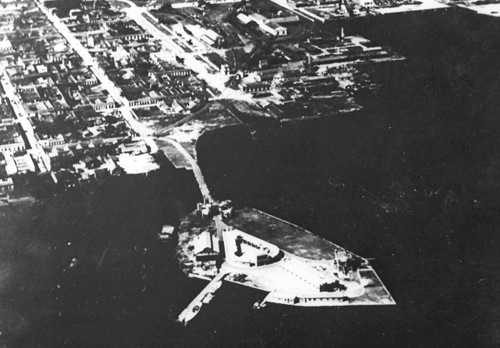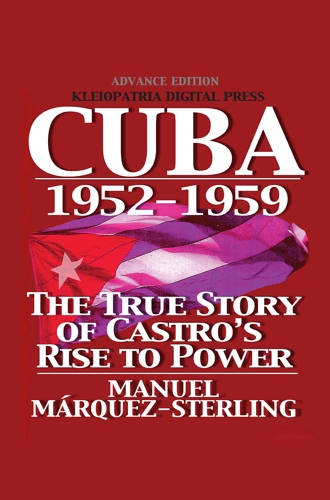September 5, 1957
Tony Varona and Prio Auténtico followers, acting in concert with M-26-7, organized an overthrow plot featuring coordinated multiple air, naval and land forces, including attacks on Havana military headquarters. However, the plotters failed to inform confederates at Cayo Loco naval station in Cienfuegos that the date of the uprising had been postponed. Unaware of the change in plans, the Cayo Loco forces acted alone and were rapidly and decisively put down.
Shortly after the uprising began, a squadron of F-47 Thunderbolt fighter-bombers was sent out to bomb the Cayo Loco base to quell the uprising. However, the squadron chief and the pilots dispatched were involved or in sympathy with the rebels, and disobeyed orders by dropping their bombs out at sea. But the rebellion was quickly and forcefully put down upon the arrival of army troops and tanks.
The rebels military leader, 2nd Lt. Dionisio San Román, had been dishonorably discharged from the armed forces in connection with an earlier overthrow plot. Over fifty years later, a number of details about the Cienfuegos mutiny and its allied conspiracy remain uncertain and contentious, including the location and circumstances of San Román’s death. By some accounts he was killed during the uprising. By other accounts San Román tried to escape by sea but was captured by a PBY amphibian airplane and flown to Havana where he was tortured and killed.
The casualties of the uprising numbered about 300. Surviving plotters were tried and found guilty at Court Martial, some sentenced to execution by firing squad. Batista commuted the death sentences to life imprisonment. Tony Varona was charged as a conspirator in the plot. But he sought asylum in the Chilean embassy and Batista allowed him safe conduct to leave the country. Soon thereafter Varona returned to Miami, continuing his work with Miami revolutionary operations against Batista.
Ex-Fidelista Pérez Vidal reports that Castro told his followers in Cuba and revolutionaries in Miami to avoid publicity for the Cienfuegos uprising because it would divert press coverage from M-26-7 operations, and that their comments to the press should treat it dismissively as an internal struggle among Batista's rivals in the Army.
The impact of the rebellion on public opinion may have been a factor in the imposition of the US arms embargo to Batista’s government six months later. The failed revolt caused a military purge, leading to the imprisonment of many air force officers for rebellion and treason. Many others were dishonorably discharged. It also led Batista to mistrust the Air Force as a service not loyal to him, further eroding morale of the Cuban armed forces. Representative coverage of these incidents in contemporaneous US press accounts is found in reporting by Time and the New York Times.
based on Manuel Márquez-Sterling's Cuba 1952-1959 and
Cuba 1952-1959 Interactive Timeline
Cuba 1952-1959 Interactive Timeline
Related Cuba 1952-1959 posts:
- (March 1958) Judiciary challenges to Batista : Officials charged for torture and murder of Dionisio San Román and other conspirators in the Cayo Loco uprising




 Mobile subscription
Mobile subscription



No comments:
Post a Comment